

 Culture & Adventure
Culture & Adventure


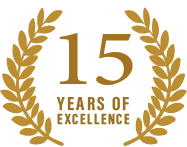
 trip overview
included
trip highlights
activities
accommodations
itinerary
packing list
faq
essential trip information
best season to travel
price & availability
Reserve Online
trip overview
included
trip highlights
activities
accommodations
itinerary
packing list
faq
essential trip information
best season to travel
price & availability
Reserve Online
 CREATING AUTHENTIC TOURS IN PERU
CREATING AUTHENTIC TOURS IN PERU

Two weeks of the best tours in peru, the perfect program for travelers who love to discover new cultures, gastronomy, people and unforgettable landscapes, you will discover Peru from the coast to the Andes and its landscapes surrounded by snowy peaks, and of course the impressive millennial past of the Incas Machu Picchu.
Our itinerary offers the perfect introduction to Peru, placing you amongst the locals in Lima, Cusco, Colca canyon and at Lake Titicaca and featuring guided sightseeing tours and experiences throughout your journey. For many the highlight of Peru will be a visit to Machu Picchu, where you will undoubtedly stand in awe admiring the ruins of the former Inca citadel, but we promise that you will be equally enthralled by country’s varied landscape, fine food and warm hospitality. This is a trip that will excite your senses and will leave you wanting to discover more.
Our tour Peru Highlights takes you to the highlights of this fascinating country. Starting with a visit to the beautiful city of Arequipa in southern Peru, continue to Colca Canyon, where you can watch the majestic flight of condors up close. Gain unique insights into the life of the local population on a crossing to the floating reed islands of the Uros, the descendants of the indigenous people of this area. Get up close and personal with the heritage of the Incas in Cusco. An exploration of the secrets of Machu Picchu is the undisputed highlight of any trip to Peru and you will certainly remember the walk through the ruins for a long time to come.
Welcome to Lima, Peru’s capital and one of South America’s most beautiful cities. Your adventure begins with a welcome meeting at 2 pm, where you’ll meet your fellow travellers and tour leader. Please look for a note in the hotel lobby or ask reception where it will take place. After the meeting, stroll the streets of downtown Lima and check out some of its main attractions on a leader-led walking tour. Enjoy free time before an optional group dinner this evening. The unofficial food capital of South America, there’s no better place to sample Peru’s national dish, ceviche, than at one of Lima’s excellent restaurants. As there’s little time spent in Lima, you may like to arrive a few days early to see the sights, including the chic suburb of Miraflores, Central Park, Lovers’ Park and the National Museum.
In due time you will be picked up from your hotel and taken to the airport. From there you take the flight to the “white city” Arequipa. Once there, a transfer will take you to your hotel.
On the way from the airport to downtown Arequipa, visit a sillar quarry during a guided tour (approx. 2.5 hours) and learn about the origin and mining of the white volcanic rock ( included in the price). Sillar was used to build many churches, mansions, and even bridges during the colonial era. The cityscape of Arequipa is still characterized by the white buildings today. The mining is still done by hand today, as it was hundreds of years ago.
Today we invite you to take a walking tour of Arequipa. The highlight here is undoubtedly the visit to the mystical nunnery of Santa Catalina. Up to 150 nuns and their maids lived here for a period of 300 years, completely isolated from the outside world. It was not until 1970 that the monastery gates opened to the public for the first time. The rest of the day is at your disposal. Your tour guide will be happy to give you tips for the rest of the day.
Tip: Do you enjoy cooking and would like to get an authentic insight into Peruvian cuisine? Then we recommend a cooking class with Arthur (optional, not included in the price). In the popular restaurant of the same name, you create Peruvian delicacies together with the friendly cook. You have the choice between two typical Peruvian dishes. With the Criollo menu you prepare ceviche as a starter, finely chopped, raw fish marinated with lime juice, garlic, coriander, onions and chilli. It continues with the main course Lomo Saltado, a colorful pan dish consisting of beef and vegetables, served with french fries and rice. With the Andino menu you start with the delicious starter Chupe de Camerones, a soup with prawns, milk, chilli and potatoes. The main course is Rocoto Relleno. Rocoto is a type of vegetable that looks similar to paprika, but is spicy. This is filled with minced meat, egg, cheese, oregano and olives.
Note: Please note that the cooking class takes place from Monday to Friday in a small international group. On weekends, public holidays and on October 17th there are no cooking classes.
In the early morning you set off into the Colca Canyon, which according to Peruvian claims is the deepest canyon in the world. Enjoy the view of the Misti and Chachani volcanoes before making a short stop in the Pampa Cañahuas National Reserve (3,400 m) to observe llamas, alpacas and vicuñas in their natural environment. There is also a rare chance to spot Andean condors and the famous giant hummingbirds (the largest in the world). The reserve is also home to 170 other bird and 20 cactus species. At the Patapampa Pass, at 4,820 m the highest point of the tour, you have an impressive view of the surrounding mountains and volcanoes. The journey continues through the town of Chivay (approx. 3,650 m), from where you can marvel at the multicolored landscape of the Colca Canyon. At noon you will reach the authentic village of Coporaque, where there is the possibility to have lunch (not included in the price) and to visit the surroundings or the ruins of San Antonio as part of a short hike (approx. 1 – 2 hours). You will then have the opportunity to relax a little in the Chivay hot springs (admission not included) before being transferred to your accommodation.
Breakfast lives up to its name at this time of day. Getting up early is essential, as the condors can only be seen in the early morning if you use the special morning thermals to let yourself be carried through the air. From the Cruz del Condor you can not only watch the birds wonderfully, but also have an impressive view of the canyon. On the way back through the places Maca, Pinchollo and Yanque you will stop a few times to admire the peculiarities of the landscape, as well as colonial churches and the rock tombs of the Inca. Then stop in Chivay for free time to explore and sample local delicacies (not included in the price). You will then be brought back to your hotel and you can spend the afternoon as you wish.
Today the morning is at your disposal. Use the time and get to know the area on short hikes. If you are interested in a bike tour or a horse riding excursion, please inform the tour guide the day in advance so that he can help you organize the tours with the hotel. After breakfast, a villager invites you to his home. They accompany the locals in their daily work, which depends on the time of year and the day of the week. Among other things, you will help, for example, with the sowing or harvesting in the fields or support you with the herding of the animals. Take advantage of this unique opportunity to get in touch with the locals and learn more about the way of life of this Peruvian population. Around noon you will pick up your luggage at the hotel and will be brought to Puno via Chivay.
After breakfast, board the speedboat and embark on a fascinating journey across Lake Titicaca, the highest commercially navigable body of water on earth. During this excursion you will visit, among other things, the floating reed islands of the Uros, which even during the Inca Empire could not be subjugated. Around 30 to 50 Uros descendants still live on the around 40 floating islands and even if they live almost exclusively from tourism today, it is exciting to learn on site how these islands are manufactured and maintained. You also have the opportunity (optional, not included in the price) to go on one of the postcard-famous “Totora boats”. Then continue to Taquile Island, where you will visit the southern, less touristy part of the island. This island is known for its terraced structures and men knitting. By the way, you can tell from the type and color of the men’s headgear their marital status. During your stay on the island you can not only enjoy the beautiful view over the lake, but also take part in cultural activities and watch the locals doing their usual daily tasks, such as fishing. You will have lunch on the island. In the afternoon you will anchor again in Puno.
In the early morning you will be picked up from the hotel and taken to the bus station. A comfortable tourist bus takes you through beautiful Andean landscapes to Cusco (travel time approx. Nine to ten hours). On the way you will visit the Museo de la Cultura Pukara in Juliaca and make another stop in La Raya, the highest point of the journey at 4,400 m. A break for lunch will be made in the village of Sicuani. Then take a look at the Temple of Raqchi and the Andahuaylillas Church (Capilla Sixtina de America) before you reach Cusco in the late afternoon and are driven to your hotel.
Note: In contrast to a conventional, public bus, such a tourist bus offers the opportunity to make stopovers at points of interest for tourists on this route and to stretch your feet. Please let us know if you prefer a faster, non-stop public bus.
Probably the most interesting city in Peru has many sights to offer. Today’s half-day city tour takes you to the Iglesia Santo Domingo, where the remains of the former magnificent sun shrine Qoricancha were uncovered after an earthquake. You will also visit the mighty cathedral of Cusco, which rises like a bulwark against the sun cult of the Incas on the historic Huacaypata square. The square, now called “Plaza de Armas”, is located in the heart of the city and is surrounded by many colonial churches that tower above the foundations of Inca temples. Later you will visit the extensive fortress Saqsaywamán, which is located above the city and offers a wonderful view over the former capital of the Inca Empire. A few kilometers further to the west, explore the natural sanctuary of Q’enko, located between the jagged rocks, where the altars and the sacrificial trough of former ritual ceremonies are still preserved today. After the small mountain fortress Pukapukara, you will also visit the water sanctuary Tambomachay. In this mystical place, let yourself be drawn under the spell of the former Inca empire and listen to the sounds of the water that rises from an old Inca water pipe and gushes over terraced walls. The afternoon is at your leisure, so that you have enough time for a walk or a shopping spree and soak up the extraordinary atmosphere of the city.
After breakfast, take part in a full day excursion to the Sacred Valley of the Incas. Your first stop is the Inca agricultural center Chinchero. In this small place colonial structures mix with the remnants of the Inca culture. For example, the church was built on the foundations of an Inca building and the remains of the original Inca walls are still well preserved and visible today. Then it goes on to the Inca complex Moray, a series of concentric, agricultural terraces. It is believed that the Incas maintained a large agricultural laboratory here, where they were able to create various microclimates in order to grow a large number of different types of grain. The circular terraces of Moray are surrounded by a dreamlike landscape, so that you can get to know both a picturesque backdrop and a highly interesting archaeological site. The salt terraces of Maras are very close by. Far away from any civilization and industry, springs arise there, the water of which is very salty. As in the times of the Incas, this salty spring water is passed over terraced salt basins. As a result of the sun’s action, the water in the basin evaporates and the Inca salt can be skimmed off. Your next destination is the Inca fortress Ollantaytambo, which towers over steep terraces on a mighty mountain promontory. The temple castle was used to protect against invasions by jungle trunks. You will then be transferred to your hotel in the Sacred Valley.
Enjoy the beauty of the Sacred Valley in the morning before you are picked up at noon and taken to the train station in Ollantaytambo. Your train ride to Machu Picchu, “the lost city of the Incas”, begins there. A member of the hotel staff will meet you at the train station in Aguas Calientes and walk you to your hotel. The rest of the day is at leisure. You can explore the town of Aguas Calientes or visit the thermal baths and relax. In the early evening your tour guide will visit you at the hotel to discuss the day ahead with you.
Tip: The expedition train is a simply equipped tourist train that is primarily intended for backpackers. If you wish, you can also cover the route with the Vistadome or the Inca Rail Ejecutivo. This comfortable tourist train is equipped with large panoramic windows (optional, not included in the price).
The bus takes you up to the wonderful citadel in about 30 minutes. During the approximately two and a half hour guided tour through the citadel, you will visit the following sights in different order, depending on the fixed circular route: the main square, the round tower, the holy sundial, the royal rooms, the temple of the three windows and the cemeteries. You will then leave the facility together with your guide and take the bus back to Aguas Calientes. From there you will travel the first part of the route by train and then a transfer will take you to your hotel in Cusco.
Note: In order to better control the number of visitors to Machu Picchu and to avoid long waiting times for entry, the famous Inca site can only be visited at fixed times. In addition, the ruins may only be visited in the company of a guide who will lead you on one of three fixed circular routes around the site. After the two and a half hour tour, you will have some time to stroll around the facility on your own as part of your assigned shift. The Ministry of Culture may make changes at short notice. If your booking is affected, we will inform you in good time.
Tip: It is still possible to climb the Huayna Picchu or Machu Picchu Montaña mountains (both optional, not included in the price). Both walks must be booked in advance along with entry to Machu Picchu (subject to availability, as a maximum of 400 people per day are allowed). Please indicate when booking whether you would like to climb one of these mountains.
Today is completely free to you. Enjoy the beautiful city of Cusco, stroll through the pretty alleys or watch life at the “Plaza de Armas” from one of the many cafes and restaurants. Incidentally, this is also an ideal opportunity to buy souvenirs such as beautiful oil paintings.
Depending on your flight, you will be brought to the airport and start your journey home or your follow-up program.
 warm jackets
warm jackets
 Hydration bladder
Hydration bladder
 wool socks
wool socks
 camera
camera
 scarf
scarf
 first aid kit
first aid kit
 hiking shoes
hiking shoes
 Dry bags
Dry bags
 Trekking Poles
Trekking Poles
 sun cream
sun cream
 Snack
Snack
 sun hat
sun hat
 bathing suite
bathing suite
 rain coat
rain coat
 Sandals
Sandals
 insect repellent
insect repellent
 Passport
Passport
 Down Jackets
Down Jackets
 toilet paper
toilet paper
 daypack
daypack
 Wool cap
Wool cap
 head lamp
head lamp
 gloves
gloves
 sun glasses
sun glasses
 cap
cap
 extra cash
extra cash
 Trekking pants
Trekking pants
It is located in the heart of the Peruvian cloud forest within the region of Cusco. The famous Inca Citadel is located on top of a mountain over 2,400 meters above sea level.
Machu Picchu is situated less than 112 kilometers from the city of Cusco. Together, Machu Picchu and Cusco are the most popular tourist destinations in South America. Located at the base of Machu Picchu mountain, Aguas Calientes is the nearest town to the famous Inca ruins. The town can be accessed by train from Cusco or via the Inca Trail to Machu Picchu.
Machu Picchu is a ancient Inca ruins located about 50 miles (80 km) northwest of Cuzco, Peru, in the Cordillera de Vilcabamba of the Andes Mountains. It is perched above the Urubamba River valley in a narrow saddle between two sharp peaks—Machu Picchu (“Old Peak”) and Huayna Picchu (“New Peak”)—at an elevation of 7,710 feet (2,350 metres). One of the few major pre-Columbian ruins found nearly intact, Machu Picchu was designated a UNESCO World Heritage site in 1983.

Although the site escaped detection by the Spaniards, it may have been visited by the German adventurer Augusto Berns in 1867. However, Machu Picchu’s existence was not widely known in the West until it was “discovered” in 1911 by the Yale University professor Hiram Bingham, who was led to the site by Melchor Arteaga, a local Quechua-speaking resident. Bingham had been seeking Vilcabamba (Vilcapampa), the “lost city of the Incas,” from which the last Inca rulers led a rebellion against Spanish rule until 1572. He cited evidence from his 1912 excavations at Machu Picchu, which were sponsored by Yale University and the National Geographic Society, in his labeling of the site as Vilcabamba; however, that interpretation is no longer widely accepted. (Nevertheless, many sources still follow Bingham’s precedent and erroneously label Machu Picchu as the “lost city of the Incas.”).
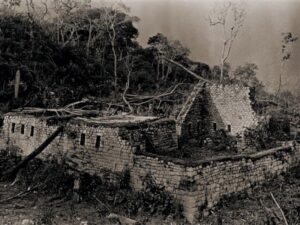
Evidence later associated Vilcabamba with another ruin, Espíritu Pampa, which was also discovered by Bingham. In 1964 Espíritu Pampa was extensively excavated under the direction of the American explorer Gene Savoy. The site was much deteriorated and overgrown with forest, but Savoy uncovered remains there of some 300 Inca houses and 50 or more other buildings, as well as extensive terraces, proving that Espíritu Pampa was a much larger settlement.
Machu Picchu was further excavated in 1915 by Bingham, in 1934 by the Peruvian archaeologist Luis E. Valcarcel, and in 1940–41 by Paul Fejos. Additional discoveries throughout the Cordillera de Vilcabamba have shown that Machu Picchu was one of a series of pucaras (fortified sites), tambos (travelers’ barracks, or inns), and signal towers along the extensive Inca foot highway.
The dwellings at Machu Picchu were probably built and occupied from the mid-15th to the early or mid-16th century. Machu Picchu’s construction style and other evidence suggest that it was a palace complex of the ruler Pachacuti Inca Yupanqui (reigned c. 1438–71). Several dozen skeletons were excavated there in 1912, and, because most of those were initially identified as female, Bingham suggested that Machu Picchu was a sanctuary for the Virgins of the Sun (the Chosen Women), an elite Inca group. Technology at the turn of the 21st-century, however, identified a significant proportion of males and a great diversity in physical types. Both skeletal and material remains now suggest to scholars that Machu Picchu served as a royal retreat. The reason for the site’s abandonment is also unknown, but lack of water may have been a factor.

The high level of preservation and the general layout of the ruin are remarkable. Its southern, eastern, and western portions are surrounded by dozens of stepped agricultural terraces formerly watered by an aqueduct system. Some of those terraces were still being used by local Indians when Bingham arrived in 1911. Walkways and thousands of steps, consisting of stone blocks as well as footholds carved into underlying rock, connect the plazas, the residential areas, the terraces, the cemetery, and the major buildings. The Main Plaza, partly divided by wide terraces, is at the north-central end of the site. At the southeastern end is the only formal entrance, which leads to the Inca Trail.
Few of Machu Picchu’s white granite structures have stonework as highly refined as that found in Cuzco, but several are worthy of note. In the southern part of the ruin is the Sacred Rock, also known as the Temple of the Sun (it was called the Mausoleum by Bingham). It centres on an inclined rock mass with a small grotto; walls of cut stone fill in some of its irregular features. Rising above the rock is the horseshoe-shaped enclosure known as the Military Tower. In the western part of Machu Picchu is the temple district, also known as the Acropolis. The Temple of the Three Windows is a hall 35 feet (10.6 metres) long and 14 feet (4.2 metres) wide with three trapezoidal windows (the largest known in Inca architecture) on one wall, which is built of polygonal stones. It stands near the southwestern corner of the Main Plaza. Also near the Main Plaza is the Intihuatana (Hitching Post of the Sun), a uniquely preserved ceremonial sundial consisting of a wide pillar and pedestal that were carved as a single unit and stand 6 feet (1.8 metres) tall. In 2000 this feature was damaged during the filming of a beer commercial. The Princess’s Palace is a bi-level structure of highly crafted stonework that probably housed a member of the Inca nobility. The Palace of the Inca is a complex of rooms with niched walls and a courtyard. At the other end of Machu Picchu, another path leads to the famous Inca Bridge, a rope structure that crosses the Urubamba River. Many other ruined cities—like that atop the dark peak of Huayna Picchu, which is accessible by a lengthy, precipitous stairway and trail—were built in the region; Machu Picchu is only the most extensively excavated of these.
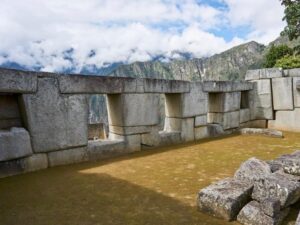
Machu Picchu is the most economically important tourist attraction in Peru, bringing in visitors from around the world. For this reason the Peruvian government wishes to repatriate the materials taken by Bingham to Yale. The ruins are commonly reached in a day trip from Cuzco by first taking a narrow-gauge railway and then ascending nearly 1,640 feet (500 metres) from the Urubamba River valley on a serpentine road. Smaller numbers of visitors arrive by hiking the Inca Trail. The portion of the trail from the “km 88” train stop to Machu Picchu is normally hiked in three to six days. It is composed of several thousand stone-cut steps, numerous high retaining walls, tunnels, and other feats of classical engineering; the route traverses a wide range of elevations between about 8,530 and 13,780 feet (2,600 and 4,200 metres), and it is lined with Inca ruins of various types and sizes. At Machu Picchu there is a hotel with a restaurant, and thermal baths are at the nearby village of Aguas Calientes. The Inca Bridge and other parts of Machu Picchu were damaged by a forest fire in August 1997, but restoration was begun immediately afterward. Concern for the damage caused by tourism was heightened by discussion of the building of a cable-car link to the site.
Machu Picchu is located in the limit of the Peruvian high jungle and the Andes, at 2,430 meters above sea level. The temperatures in this region range between 12°C and 24°C, it has predominant warm and humid weather throughout the day and it’s colder during the night. The climate condition in Machu Picchu is characterized by two primary seasons:
– Rainy Season: It takes place between December and April, being these the rainiest months of the year. However, the rainy season is expected to transition with mild precipitations between October and December.
– Dry Season: It is considered the coldest season of the year. This period starts in May and ends in September. Bright and sunny days are expected throughout this season.
It is worth mentioning that the weather conditions in this region may change drastically. Therefore, we encourage you to know everything about it and prepare the perfect Machu Picchu packing list before venturing out to this wonder.
July and August is peak season, when the highest number of visitors are taking on the Inca Trail or wandering around Machu Picchu.
The Andean foothills are at their driest at this time of year too, with the rainy season taking place between November and March.
We favour visiting throughout the dry months of April to October, but it’s worth avoiding the July and August peak period if you’re not tied to travelling at this time.
Machu Picchu is often busiest between 11 am and 3 pm when most train and bus visitors arrive, so the opportunity to see the site in the morning or at dusk could allow you to have a more meditative experience and better light for photography.
Your most common route to Machu Picchu is flying into Peru’s capital city, Lima, before transferring to an internal 1h 15m flight to Cusco.
Cusco sits at the base of the Andes in the southeast of Peru. It was the capital of the Incas and is the leaping-off point for Machu Picchu and the Sacred Valley, the one-time heartland of the Inca Empire. You can reach Machu Picchu from Cusco on the train or by trekking.
A small town, Aguas Calientes, has sprung up in the valley below Machu Picchu. It serves as the disembarking point for the train or a gathering place after you’ve completed the Inca Trail and descended from Machu Picchu.
From as early as 5am buses leave here to travel up the windy road cut into the mountainside to the entry gates of Machu Picchu.
The train journey from Cusco to Aguas Calientes offers you the chance to see dramatic, natural scenery as you make your way through lush valleys and past rugged peaks, following the course of the Urubamba River.
There’s a variety of rail services, from regular carriages with comfortable seating, Vistadome services with panoramic windows through to the luxury Hiram Bingham train with fine dining and entertainment.
You can break up your journey mid-point by stopping or staying overnight at Ollantaytambo in the Sacred Valley, once an important administrative centre for the Incas. The remnants of a sturdy fortress, complete with terraces, dominates the town. You would travel into the valley by road and then take the train from Ollantaytambo to Machu Picchu.
Machu Picchu stands at around 2,450 m above sea level, and Cusco at 3,400 m. At these heights, there’s 20 per cent less oxygen in the air. In the vast majority of cases, symptoms of altitude sickness are very mild (a little sleepiness or a slight fuggy head) and wear off after a day or two, but it can make doing anything energetic feel like a struggle.
Our Peru specialists can give you personalised recommendations about how to acclimatise ahead of your trek and combat any altitude sickness during it.
Yes, one day is enough to visit the ancient citadel of Machu Picchu. However, the visit has been limited to 4 hours per passenger, and tickets are issued with a certain entrance time. Also, if you’re doing the additional treks, your permanence may be extended from 2 to 3 hours.
No, Machu Picchu is open every day of the year, even on holidays. However, if you’re planning to take the Inca Trail to Machu Picchu, keep in mind that the trail is closed in February due maintenance.
Those are the surrounding mountains to the Inca Citadel. Huayna Picchu is located at 2,720 meters above sea level and offers an outstanding view to the archaeological site as well as several Inca ruins along the trail.
The Machu Picchu Mountain is located at 3,082 meters above sea level, and serves as another viewpoint to the famous historical sanctuary. However, the trek to its summit is significantly less challenging than the Huayna Picchu mountain.
To trek either of these mounts, you must purchase an additional entrance ticket well in advance. For more information, please contact your travel agent.
The visit time in the citadel of Machu Picchu is an average of 1 hour and 45 minutes to 2 hours, this time is the maximum that is used to be able to make the main circuit that contains the most outstanding sites of the Historic Sanctuary.
Note: You should know that there is no free time to visit on your own after the guide, unless you buy one of the extra hiking tickets (Huayna Picchu or Machupicchu Mountain) so you can re-enter the attraction.
Huayna Picchu :
The hike to the summit is approximately 45 minutes, along narrow and steep Inca stairs. Once at the top, you get to see the Citadel of Machu Picchu and its surrounding hills and valleys. This is the famous peak in the background of every iconic Machu Picchu photo. Summiting Huayna Picchu is always a top item on most Machu Picchu visitor’s lists which means that you usually need reserve this mountain 6 months in advance. Only a certain amount of people are allowed to hike this mountain each day (currently 400). Along this trek you’ll see breathtaking views of the Machu Picchu ruins. The limited number of tickets is a restriction set forth by the ministry of culture in Cusco, not by Andean Path Trek. This is completely out of our hands unfortunately.Tickets for this mountain are non-transferable.
Machu Picchu Mountain:
The hike to this summit is approximately 1.5 hrs. Once at the top, you get a much higher vantage point so you have an amazing view of the Citadel of Machu Picchu and its surroundings. This hike is a great alternative to Huayna Picchu. It is ideal for those who don’t want the hassle of fighting for a ticket, or who were unable to get one. Technically, spaces for Machu Picchu Mountain are also limited to 400 per day, as well it’s use to sold We simply need to reserve a space when we buy your entrance tickets. This trek is great because it will also take you high up like Huayna Picchu, offering great views. This trek has an easier incline (also making it accessible for those who fear the heights of Huayna Picchu), but the path is much longer making it equally as challenging in it’s own way.
The only toilets are located in the main entrance of the Machu Picchu citadel. There are no toilets within the archeological complex.
Aguas Calientes has a plentiful selection of restaurants to suit your tastes and wallet. One of our current favourites is Indio Feliz, an award-winning restaurant serving Peruvian dishes with a French twist tucked away in a side street.
You can also try Peruvian street food if you time it right. Every Sunday, slow cooked chicharrones (hog roast) is sold until it’s all gone.
No, the Inca citadel’s circuit isn’t challenging at all. It is not necessary to have a high fitness level to explore the sanctuary.
What are the Machu Picchu entry requirements?
To enter Machu Picchu, you’ll need to arrive for the stipulated entrance time in your ticket and show your passport.
Do I need to buy the entrance to Machu Picchu in advance?
Yes, it is highly recommended to purchase the ticket to Machu Picchu in advance, especially if you’re traveling during the high tourist season. For more information contact your travel agent.
Is there an age limit?
No, there is no age limit for the entrance to the historical sanctuary.
Should I hire a guide for Machu Picchu?
Yes, a companion of a guide is mandatory for the visit to Machu Picchu.
Are there any restrictions for Machu Picchu?
Yes, to optimize the experience inside the archeological site, the Peruvian government has implemented the following measures:
Train ride is the most in-demand way to get to Machu Picchu, not only for the time-wise efficiency but because it goes across the Peruvian highlands, transitioning to the impressive cloud forest and its imposing mountains. Likewise, there are different types of trains and routes to reach the famous Machu Picchu town.
Where can I take the train to Machu Picchu?
There are different train stations, but this will depend on the departure point of the train ticket you’ve purchased. Here we have listed the train stations for Machu Picchu.
Which are the types of trains to Machu Picchu?
There are different types of trains and routes to reach the famous Machu Picchu town. These are the most in-demand options:
– Expedition Train: This tourist-class carriage is one of the most popular train services to get to Machu Picchu. It departs from Cusco, Ollantaytambo and Aguas Calientes train stations.
– Vistadome Train: For those looking to experience the exuberant nature of the Cusco countryside, this panoramic train offers floor-to-ceiling windows, on-board service, and typical dance shows. It departs from Cusco, Urubamba, Ollantaytambo, and Aguas Calientes train stations.
– Sacred Valley Train: This is one of the most luxurious train rides to get to Machu Picchu. Travel through time in these 1920s-style wagons and experience the best of the Urubamba valley and the Peruvian high jungle.
Can I choose seats on train trips?
Unfortunately, Peru Rail or Inca Rail (the railway company) does not allow passengers to choose seats on any of their different types of train. The distribution of these is done automatically by the company’s system.
Are there luggage limits for the trains?
Bags that weigh more than 5kg are not allowed on the train or in the Archeological Site of Machu Picchu. Therefore, you must leave your large luggage in the storage service of your accommodation.
For your trip to Machu Picchu, we highly recommend you to carry a light backpack with just the essentials for your comfort.
There are only a couple of ways to get to Machu Picchu from Cusco: or travel the Inca Trail for 4 days; or cross the Sacred Valley of the Incas, on one of the world’s most incredible short train journeys, to Aguas Calientes Machu Picchu (town).
In Ollantaytambo you must board a train to Aguas Calientes (Machu Picchu town).The train takes about 2 hours and tickets have to be booked in advance.
Aguas Calientes is the name of the town at the foot of the Machu Picchu mountain where the Inca City of the same name is built. In Aguas Calientes you can take buses to the entrance to Machu Picchu. Although you can walk up, going by bus is the best option. Remember that tickets are valid only one use and have a duration of 3 days.
Yes, there are ATMs in Aguas Calientes. The only thing to care about is to know how much money the bank will charge a withdrawal fee or not. What is most recommended is to withdraw cash in Cusco as ATMs in Machu Picchu may not be functioning well too.
The Incas traced a network of roads of 30,000 kilometers that crossed the six countries of the Tawantinsuyu. It was called Capac Ñam, which in Quechua means Camino Real or Camino del Inca, and it was the longest and most advanced road network in pre-Columbian South America. Its most famous section is the 43 kilometers that go from the town of Chillca to Machu Picchu and is called the Inca Trail. The four-day trek begins at kilometer 82 of the railway that goes from Cusco to Aguas Calientes; From there you follow dirt trails and suspension bridges that cross valleys, mountains, jungles, forests, rivers and Inca ruins. The tour ends at Puerta del Sol, the main entrance to Machu Picchu. There, many walkers, overwhelmed with emotion, cry as they see the city hidden among the mountains for the first time.
Even today the certainties about Machu Picchu are scarce. It is known that the Incas built it around 1450 and that they abandoned it a hundred years later, after the Spanish conquest. Its geographical isolation, between jungle and mountains, made it go unnoticed until 1911, when the American historian Hiram Bingham reached the ruins thanks to the local shepherds and disclosed its remains to the rest of the world. Some researchers believe that it was the resting place of the Inca royalty, others think that it housed a ceremonial center or a military fortress.
Ascending to 2,438 meters of altitude is not only rewarded with an idyllic postcard, but also a journey through time through legendary ruins.
Machu Picchu symbolized the great power of the Inca Empire. Built on the heights, at the foot of the majestic hills of Huayna Picchu and Huchuy Picchu, in the Andean mountain range, this city that was rediscovered in 1911 by the American explorer Hiram Bingham, who considered it to be a refuge for the Inca accompanied by the virgins of the Sol. It was later thought to be a military fortress and has also been seen as a unique sacred center. Although the latest investigations suggest that it was a temporary royal residence. Be that as it may, Machu Picchu, declared in 2007 as the New Wonder of the Modern World, evokes mystery and feeds the most diverse enigmas, which is reflected in its almost 200 buildings at 2,438 meters of altitude.
WELCOME TO MACHU PICCHU WITH LAMAS
After crossing the access point to this sacred city, you go up a ramp that leads to the stepped terraces that are an example of Inca art. The Incas thus maximized the scarce cultivable space and avoided landslides due to torrential rains. The greenery of these terraces and the llamas that walk through them invite you to take photos with the most iconic animal in Peru. Leaving behind the terraces, you enter the upper neighborhood, Hanan, crossing a wall that surrounded the llacta (city in Quechua).
THE ONLY CIRCULAR CONSTRUCTION IN THE CITY
Once inside, the traveler enters a stone labyrinth whose most emblematic building is the Temple of the Sun, the only circular structure in Machu Picchu. But the most surprising thing is the fact that it was built on a huge natural rock that serves as its foundation. The Inca architects took advantage of the shape of this rock to give continuity to the building by reducing the width of the blocks, which is barely noticeable. The Incas did not know the wheel nor did they have draft animals, so observing large constructions integrated into nature is a magnificent example of the skill of their architects, engineers and stonemasons.
A MEDIEVAL TOWER?
It is also known as “the tower” for its resemblance to a medieval tower. The lower part houses an enigmatic cave, full of altars and niches, which suggests that it was a place of worship. Perhaps it was the royal mausoleum where the mummy of the Inca Pachacuti rested, “the transformer of the world”, who erected this city in the mid-15th century.
After climbing a few steps from the outside, you access the upper part of the Temple of the Sun where a surprisingly solid circular wall with open trapezoidal windows surrounds a large granite stone inside, a kind of altar, which at each solstice, at dawn It was illuminated by sunlight. The orientation of its windows is perfectly aligned to receive the first rays of the sun at the solstices. For this reason, it is believed that, in addition to being a temple dedicated to the cult of the star king, it was also an astronomical observatory.
DEITIES AND VIEWS
In the Inca civilization, the main god was Inti, the Sun, whose rays gave sustenance and life to all beings. Temples in his honor, generally built of stone and circular in shape, were found everywhere in the Empire.
But the best thing is its location, from where you can see a beautiful sunrise over the Vilcabamba mountain range and an overwhelming view of the Urubamba river canyon and Putucusi hill.
PRINCESS OR PRIEST?
After enjoying the magnificent views from the Temple of the Sun, a few meters away, in a beautiful square, is the Ñusta Palace or Priestly House. Although he is better known by his first name, it is not known for sure what his function was. The ñusta was a princess who belonged to the panaca, or royal family, of the ruling Inca, which was made up of the coya, the main wife, the secondary wives, or concubines, and the male princes, called auquis. Each panaca had his personal servants (yanas), his own land for agriculture, and private residences. Finely worked stones of excellent quality were used for its construction, so it is believed that important members of society lived here, perhaps even the ñusta. In this two-story building, which did not communicate through the interior, niches can also be seen, which indicates that it was related to the ceremonies that were officiated in the neighboring Temple of the Sun. Therefore, it is not ruled out that it was a chapel of the temple itself. Another hypothesis is that it was a temple dedicated to the Moon. Whatever its function, in the same square shared by the two buildings stands a wall that Hiram Bingham baptized as the most beautiful of Inca architecture.
A PALACE WITH MANY LEGENDS
The royal residence, next to the house of the Ñusta and the temple of the Sun, was a set of rooms where the Inca Pachacuti and his family stayed when they visited the city. The privacy of the royal apartments was guaranteed by a wall and access was through a dark and narrow corridor that led to a bright courtyard. Many legends have arisen around this residence, such as that of a room with a chained puma, a patio where Pachacuti’s own mummy could rest, a private toilet and a magnificent garden in which the orchids competed in beauty with the magnificent views .
THREE WINDOWS FOR THREE BROTHERS
One of the most photographed and iconic buildings in Machu Picchu is the Temple of the Three Windows. It is known that there were originally five, and two of them were closed to turn them into niches or niches where queros (colored wooden vessels used in ceremonies), figurines and other utensils were placed. Many pottery remains were found, probably for rites, but it has not been possible to decipher its meaning or whether it was really a temple. What is most striking, apart from the wonderful views of the Main Square from its windows, is their large size, which is unusually large for this type of construction. This temple is related to one of the main myths about the origin of the Incas, that of the Tambotoco hill. According to legend, from this hill of three caves – which represent the three windows – Manco Cápac I, the mythical founder of the Inca Empire, and his brothers emerged. Beyond its symbolic character, linked to the founding myth, it can be affirmed that it was a wayrona-type building, with three walls, with a stone column in the center of the front, facing the Sacred Plaza. Possibly this column served as support for a beam that supported a huge sloping roof. This had to be thick and heavy to be able to withstand the heavy rains and also its strong winds.
THE PYRAMID IN FRONT OF HUAYNA PICCHU
From the Sacred Plaza, where the Temple of the Three Windows and a couple of other structures are located, starts a steep staircase skillfully carved by the Incas. This leads to the top of the Intihuatana temple, a magnificent pyramid with a stepped shape behind which the Huayna Picchu mountain rises imposingly, the quintessential icon of this sacred city.
THE ENERGY OF THE SACRED STONE
Once you reach the top, an esplanade opens up with a three-wall construction (wayrona), and in front of it, some carved rocks that imitate the shapes of the mountains opposite, as if they were real mirrors. At the highest point, on the same esplanade, stands the sacred stone, carved in one piece, whose peaks were aligned with the most important mountains. In addition, the edges of its points pointed to the four cardinal points, and during the two equinoxes, the Sun passes through the stone without leaving a shadow on it. For the Incas, stones carved in harmony with nature constituted huacas, sacred points, and there were many in the Inca Empire
PLACE NAMES ‘MADE BY’ HIRAM BIGAM
The names of the most important constructions are the fruit of the fertile imagination of their discoverer, Hiram Bingham, and this temple is no exception. The name intihuatana means in Quechua “place where the sun is tied”. The North American explorer associated this stone with another similar one that he had seen in Pisac (about 30 km from Cuzco), where the Sun was symbolically tied to the stone so that it would not disappear during the shortest days of the year. Nor is it ruled out that this natural altar was a sundial, and even the scene of sacrificial rites. It seems that the Incas used flames of different colors depending on the ritual that was going to be carried out.
Today there is no exact answer as to the function of this enigmatic stone. The truth is that many of the visitors who have seen and touched it confirm that they feel a special telluric energy, which makes this place the most mystical of Machu Picchu.
THE AGORA OF MACHU PICCHU
At the foot of the Intihuatana pyramid lies the Main Square, in the center of the city, which is the natural division between the lower neighborhood, Hurín, and the upper neighborhood, Hanan. As a reflection of a highly hierarchical society, two well-defined sectors coexisted here: urban and agricultural. The upper part, in the north, corresponded to the urban sector and housed the main buildings of the ruling elite and the priestly caste, who represented spirituality, power, the nobility… The lower neighborhood, in the south, was the agricultural sector and it was formed by terraces that laid the foundations of the city and fed its inhabitants. It was sacrifice and submission to the State.
HUGE STONE WINGS
From the Main Square, and through a passageway, you reach the Temple of the Condor, located in the lower neighborhood, one of the most unique constructions. Its façade, formed by two rocks that suggest enormous open stone wings, is the element that distinguishes it from the rest of the structures. The shadows cast by these rocks also created the optical illusion of two large condor wings outstretched. In addition, just in front of the façade stands a curious stone sculpture carved in the shape of this bird, with its characteristic ring around its neck. Inside, there are some large niches that some authors believe could have been cells where prisoners were subjected to terrible punishments. Among them, that pumas and snakes ended their lives and their meat was later devoured by a condor, intervening in this punishment the three sacred animals of the Incas. In the lower part of this temple a mummy was found, so this site could also be a tomb.
The condor, that majestic bird that only lives in America, was a sacred animal and highly respected by the Incas. It represented immortality, strength and intelligence. It had the very important mission of making the Sun reborn every day because with its strength it pushed it out of the darkness providing the earth with life and fertility. Therefore, it is not surprising that there was a temple dedicated to this bird in the citadel.
CITY OF VIRGINS
Women, in this society, only had two destinies (without being able to choose): get married or enter the acllahuasi, which means “house of the chosen ones” in Quechua. It was a religious institution created by the Inca Pachacuti and was made up exclusively of women, the acllas or “virgins of the Sun” (as the Spaniards called them). They entered at the age of 8-10 years, previously selected, and were separated from their families, forcing them to take a vow of chastity and work for the State, which financed the institution. These young women, without any contact with society, were under the supervision of the mamaconas, who taught them to spin, weave and perform domestic tasks. They were also in charge of making chicha, an alcoholic beverage obtained by fermenting corn. Among their religious obligations, they had to keep the sacred fire always burning and prepare the ceremonies, of which, unfortunately, they sometimes became involuntary protagonists when they were sacrificed.
After four years of training, the Inca chose the destiny of the young women. The most beautiful became his concubines or secondary wives; they were the huayrur acllas. Others were given to warriors as a reward for their exploits on the battlefield; they were the paco acllas. Only a few remained in the acllahuasi for life, the mamaconas, who were really the virgins of the Sun. The issue of virginity was of the utmost importance since its loss was punishable by death.
THE CHOSEN WOMANS
For a time it was thought that Machu Picchu was the mythical Vilcabamba, the last refuge of the emperor Manco Inca, who fled from the Spanish along with the Virgins of the Sun. This theory of romantic overtones was due to a confusion with the human remains found when Hiram Bingham discovered the city. An osteologist on his team confirmed that the vast majority of the bodies belonged to women, based on the size of the bones. Years later, with new forensic analysis techniques, it was concluded that the skeletons were actually men and women in a percentage close to 50%. Despite this confusion, it is not ruled out that the structure baptized as the house of the Chosen by the American explorer was really the acllahuasi, since there are living spaces, a sanctuary, wayronas for work, product warehouses, and also some bowls of stone on the ground that were probably mortars where the chicha was prepared.
Machu Picchu is undoubtedly the most important tourism destination in South America. Every day, around 3000 people are arriving to visit this ancient Inca Citadel. However, there are still many questions about Machu Picchu nowadays, below find the most interesting facts about Machu Picchu.
Machu Picchu was built by Inca Pachacuti.
Peruvian culture started somewhere around 5000 B.C. Caral in the north of Lima is one of the oldest civilizations in Peru; they lived in the desert and survived trading with their neighbors while Mesopotamia, Egypt, China, and India were developing.
The Incas appear in the history line around the 1300s. Many Inca cities were built over the foundation of past civilizations like Cusco, the capital. However, no traces of earlier civilization were found in Machu Picchu. This means that the Incas were the first to arrive at these mountains. Machu Picchu was built between 1400 AD to 1500 AD. This period belongs to Pachacuti, the 9th Inca ruler, and his son Túpac Inca Yupanqui.
Machu Picchu was abandoned after the Spanish Invasion.
Despite many theories of diseases, wars, and hunger in Machu Picchu, it might have caused the people to abandon the great citadel suddenly. Nowadays, we know that Machu Picchu was still inhabited during the first years of the conquest and abandoned during the retrieve into Vilcabamba, the last capital of the Incas.
Machu Picchu was never lost.
Hiram Bingham arrives at Machu Picchu on the morning of July 24th, 1911. He found 3 families living at the first building right after the entrances: Bingham’s first guide was a little boy 11 years old named “Pablito,” he used to play inside Machu Picchu and knew the Inca city by hand, all this was documented in the first pictures taken in black and white.
Machu Picchu was not Discovered by Hiram Bingham.
When Hiram Bingham arrived in 1911, he found in the temple of the 3 windows and painting saying “Agustin Lizarraga 1902”, he was a farmer from the Santa Teresa town next to Machu Picchu. Unfortunately, he fell into the Urubamba River in 1912 and died.
Hiram Bigham is the scientific Discoverer of Machu Picchu.
Everybody agrees that Hiram Bingham did not discover Machu Picchu. However, Hiram Bingham gave scientific value, historical value and brought the attention back to this citadel. In 1913, “National Geographic” magazine published a detailed article introducing Machu Picchu and its work, revealing the great citadel.
The Inca Trail was used as a Pilgrimage path to Machu Picchu.
Machu Picchu has 2 ancient access routes: One is an easy and simple access path along the Urubamba River banks, allowing the arrival to the great citadel in just one day. The other one is the stunning Inca Trail that climbs mountains and arrives at the different temples in the mountain before arriving at Machu Picchu.
Many historians suggest that the Inca Trail to Machu Picchu had a ceremonial purpose, a hike used to prepare travelers for Machu Picchu, the Sacred Citadel. The Inca Trail might represent the first Inca King, Manco Inca’s journey when they exited the Island of the Sun in Lake Titicaca and traveled across the Mountains to Cusco valley, where they found the capital of the great empire.
Yale Returned Artifacts To Peru.
Hiram Bingham III excavated in Machu Picchu between 1912 and 1915, and the artifact found during this time left Peru under a special governmental decree. The Materials were loaned to yale University for research, and they needed to be returned. Some artifacts were returned after World War , but most of them were kept in the school.
In 2008, Peru’s government filed a lawsuit against Yale, and in 2012, after a partnership agreement between Yale University and the Univerity of Cusco, all artifacts were returned.
Machu Picchu was made earthquake-resistant.
Peru is a seismically unstable country, we are situated in the Pacific Ring of Fire, and earthquakes had flattened the cities even long before the Inca nation. Machu Picchu is also built between 2 geological fault lines. However, the Inca engineers knew that, and they built all their cities earthquake-resistant. The stones are cut so tightly that you can’t fit a needle between these spaces.
The best part of Machu Picchu is underground.
Modern engineers in Machu Picchu had estimated that 60 percent of Machu Picchu is underground constructions, and we can only see the remaining 40 percent. This doesn’t mean tunnels. The underground constructions are the drainage system and the building’s foundations on such a steep mountain top.
Machu Picchu water system is very advance.
Before building the city, Inca engineers had to plan how to bring enough water. Machu Picchu is located in the Could Forest, a warm and humid place; the reason why 60 percent of Machu Picchu is underneath is that the Incas were fighting against the humidity, against the rain, and they built the vast drainage system to exit the water from the city and avoid landslides. However, they needed to bring water to the citadel and consumption; this needed to be just enough for all living in Machu Picchu.
They decided to build a 749m long canal with 3% of inclination. There are 16 fountains to distribute the water for each neighborhood; the first one at the top was reserved for the king. This inclination allowed the water to run smoothly through the city even in the rainy season without causing any trouble.
Machu Picchu has 2 Mountains to climb.
Almost all visitors want to climb Huayna Picchu Mountain, but few people know about the other Mountain called Machu Picchu Mountain or Montaña. Huayna Picchu will sell out very fast, but you can still climb Machu Picchu Mountain that offers even greater views. Machu Picchu Mountain is the highest mountain with 3082 meters (10111 ft.). It’s important to know that Machu Picchu citadel is different from Machu Picchu Mountain.
Machu Picchu was an astronomical observatory.
Machu Picchu is considered a holy city; there are temples and sacred places all over the town.
Recent studies have shown that most of Machu Picchu’s buildings are oriented with the most important mountains around. One of the best examples is the Intihuatana Stone; the corners of this structure point to Salkantay Mountain, Pumasillo, Yanantin, and the Sungate.
Machu Picchu is divide in 2 sectors.
Machu Picchu was very well organized. The town was divided into 2 main sectors divided by a huge wall.
The agricultural sector is the first part of the terraces where Inca is used for farming maize, beans, and fruits. The terraces have an advanced drainage system.
The urban sector is divided by a tall wall; inside, there are temples, palaces, houses, and plazas. There are around 200 buildings that housed around 800 to 1000 people in total.
Machu Picchu was not destroyed by the Spaniards.
The conquistadors destroyed most Inca sites like Sacsayhuaman, Ollantaytambo, Pisaq. However, Machu Picchu was never found thanks to its hidden location, making it one of the Incas’ best-preserved archaeological treasures.
Machu Picchu has Secret Temple.
This is the Temple of the moon; unfortunately, this place is optional and allowed only to visit the early Huayna Picchu Mountain shift.
Machu Picchu also has a Local Museum located down by the bridge that crosses the Urubamba River. You will see the artifacts found in Machu Picchu and many of the first pictures taken in 1911.
Only Llamas live in Machu Picchu Today.
Machu Picchu is a protected area and a World Heritage Site since 1983. No one can live inside the citadel. However, during your visit, you will see several llamas, they are not native to the area, but they were bought to Machu Picchu to enhance the site’s beauty and trim the grass.
Machu Picchu was not finished.
The question that everybody asks is if Machu Picchu was finished. Many Inca sites in Cusco were not finished like Ollantaytambo invaded by the Spaniards, most of the rocks that the Incas were transporting to built the city were left in the trail; now, these boulders are called “Tired Stones.” The rocks were transported from far away quarries.
Machu Picchu, on the other hand, the quarry was right there, the city was completed. However, like any other modern city, it was still growing, so we see unfinished construction in Machu Picchu.
Only women lived in Machu Picchu?
Among the findings in Machu Picchu, there were around 160 skeletons, most of them were short. From this, Dr. George Eaton, the Osteologist, concluded that most of Machu Picchu’s Inhabitants were women. Bingham concluded that the site was the “temple of the Virgins of the Sun. “
Later research will prove that the amount of female and male skeletons was almost equal, and the reason why the skeleton is short because that was the average height of the Incas by that time.
Machu Picchu has only 2 season.
Machu Picchu has only 2 seasons; the wet and dry seasons.
Machu Picchu means Old Mountain.
Machu Picchu is a compound Quechua word; “Machu” means old or great, and Picchu means mountain.
Machu Picchu is not the real name.
On July 23, 1911, the expedition led by Hiram Bingham reached the small village of Mandor, near Aguas Calientes. The local farmer Melchor Arteaga told the explorers that there were many ruins in the nearby mountains. They asked the name of the site, and he said Machu Picchu.
Unfortunately, there is no record of a town with this name. Over the years, many names have been proposed like Llaqtapta, Karmenqa, etc. However, a few years ago, the historian had found writings from the first conquistador where appeared a list of the Inca Kings and the cities that each of them built. One line says Pachacuti built the Picchu, This could be the real name of Machu Picchu, and the proved that Pachacuti built this incredible city.
STEP 1
STEP 2
STEP 3
STEP 4
For Machu Picchu Tours, we recommended booking at less 1 or 2 months in advance. The government has strictly limited the number of people permitted on Machu Picchu (permits are issued to about 2500 per day). We therefore recommend that you try to make your reservation for Machu Picchu as far in or as soon as you know the dates of your international flights.
Nov, Dec, Jan: the trek permits for some departure dates were sold out 3 months in advance. we therefore recommend making a reservation at least 5 months in advance, although I am sure there will still be trek permits available for some dates 3 or 4 months in advance. Departures around Christmas and New Year tend to sell out fast.
March, April, May and June: Many trek departure dates during these months have sold out as soon as the trek permits go on sale at the beginning of January so we would recommend making a booking before the beginning of December to allow us time to process your booking.
Our company will be able to refund a part of your reservation deposit, in case you cannot complete your adventure to Machu Picchu. But this request must be sent to the company’s mail, with a minimum of 15 days before starting your Trekking. Otherwise you could be charged some administrative costs.
A very important issue to give, is that if you paid for the entire tour, and for any reason you decide to cancel the tour less than 48 hours, this can only be done under certain conditions, by your travel agent, who will inform you of the expenses that should cover.
We recommend making your reservation in advance and we will guarantee your Spaces for tours to Machu Picchu.
Each reservation needs 50% of deposit as first payment. The final balance will be paid in Cusco (On the Briefing Day).
About Payment you must choose where you would like to make the deposit:
By Pay Pal or Credit Card
First, we will send you an email to confirm your payment.
Two weeks before your tour date, we will contact you by email to request the final payment. We will also ask you where you will be staying in Cusco, to be able to pick you up on the day of your tour to Machu Picchu.
After we receive the final payment, we will send you an email confirming your tour date and informing you of important contact information for our tour agency, as well as some final tips to prepare for Machu Picchu adventure.
Once we have purchased your tickets, with your security deposit, you can only change your start date if you pay an additional amount. This amount is usually around $50 USD. The reason for this is the tickets we purchase are non-refundable and non-transferable, so we are not allowed to simply change your tour date.
Unfortunately, the 5% charge is completely out of our hands. This fee does not go to us, but to PayPal and VISA. There is really no way around it.
Want an in-depth insight into this trip? Essential Trip Information provides everything you need to know about this adventure and more.
View Essential Trip InformationThe best time to visit Peru is during the dry season, between May and November, when the weather is dry and bright, with more frequent rainfall occurring between November and April.
To book this tour, a minimum of $ 1000 USD per person is required, the remaining balance will be paid upon arrival in Peru, at the Cusco office.
Any other additional information, please coordinate with your travel agent.
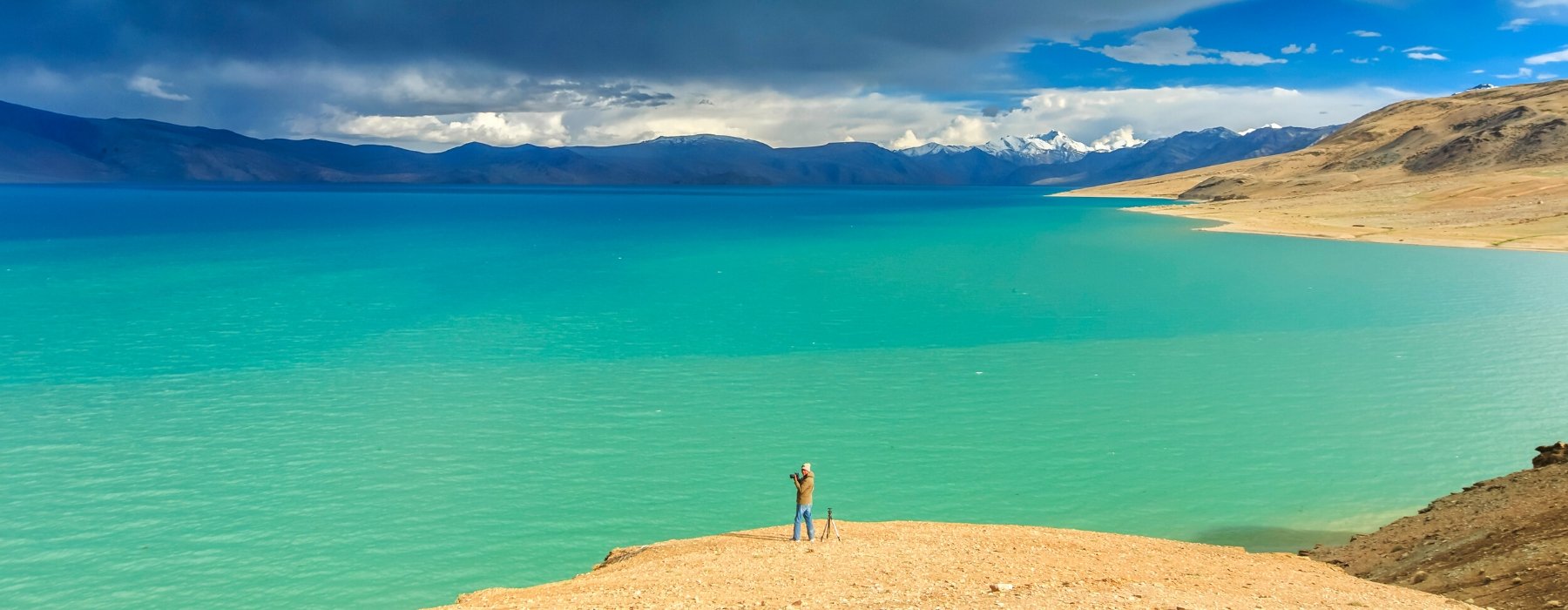
You’ll get up close and personal with the destinations and communities you travel through, seeing the cultural and historical highlights, natural wonders and wildlife, and local hidden gems.
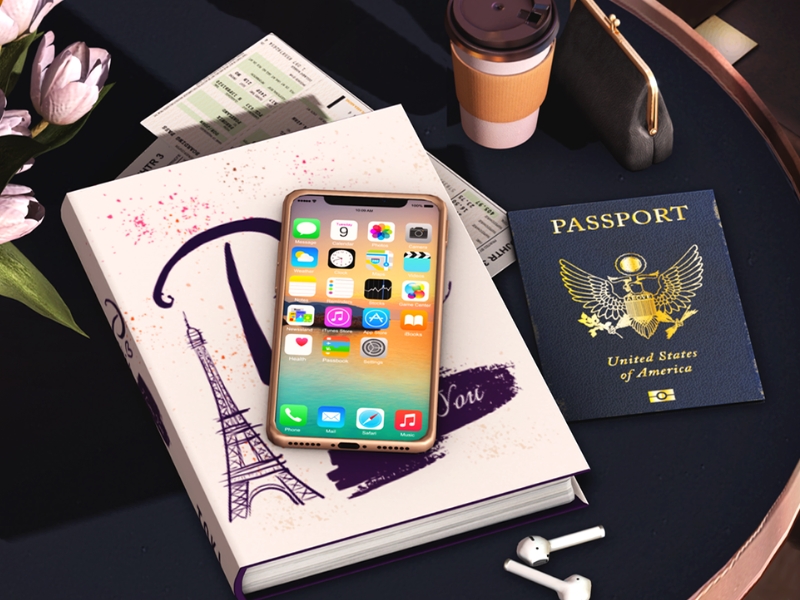
Peru is a country of basically free access. Most of the countries of America and Western Europe do not require a tourist visa to enter Peru, and the maximum length of stay granted by the authorities is 183 days (it cannot be extended). For a stay for a longer period with other objectives (business, study, work, etc.) it is necessary to previously request the corresponding visa from the Peruvian consulates.
To enter Peru it is an essential requirement to present a valid passport with a minimum validity of six months from your entry into the national territory. Citizens of Argentina, Brazil, Paraguay, Uruguay, Ecuador, Colombia, Bolivia and Chile can enter with their national identification document.
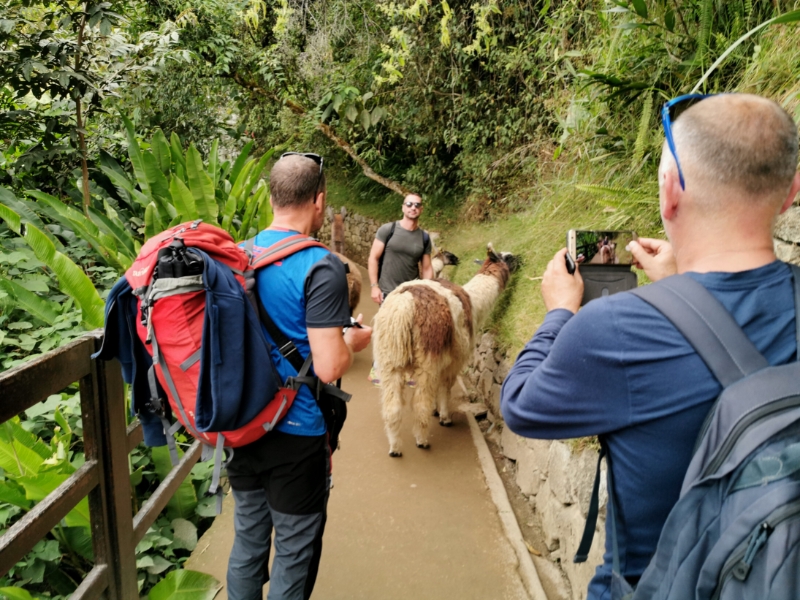
Traveling is one of life’s great pleasures and what most of us dream to do at one time or another in our lives. Discovering new cultures and visiting ancient ruins is what motivates us to travel. Peru has a rich and colorful history with many different regions to explore. While thinking of your Peruvian holiday you might want to also consider a group or individual tours in Peru. Both options are viable when traveling in Peru if you prefer the company of other people when you travel then a group tour will be for you. You’ll always have someone to keep you company along the route, but you don’t always have to walk together. Wherever possible your Andean Great Treks leader will allow everyone to walk at their own pace, regrouping regularly along the route.

The currency in Peru is the Sol. It doesn’t take long to get used to it. There are just over three Soles to the US Dollar (USD), around three and a half Soles to a Euro (EUR) and just over four Soles to the Pound (GBP). Rounding up helps you make quick conversions when deliberating prices and making payment. While some businesses accept US dollars and some ATMs allow you to withdraw it even, it is much easier to pay for day-to-day things with Soles including food and drink, shopping at local markets and entry to local attractions. There are ATMs in every major city in Peru and as a point of reference can also be found near each city’s Plaza de Armas (the main square). It’s highly unlikely that you will find any ATM in more rural areas including villages and small towns. The fee for withdrawing money at the Peru ATM is around $5-$7 per transaction. The maximum withdrawal is around $200 – $250 per transaction.

Like many other countries in developing destinations, the region’s beauty and uniqueness are countered by inequality and lack of investment. This has led to crime rates (mainly theft and scams) not being uncommon in the larger cities. We know this doesn’t sound very attractive, but it’s important to mention it regardless. Most experienced and well-traveled visitors will understand this well and not be too concerned. However, having said this, it is our duty to take care of you during your visit. That’s why we present you here with a few recommendations to be extra safe. Avoid walking alone at night on empty streets. Don’t flaunt valuables! If going for a walk or going on public transport, be sensible and avoid showing off expensive items such as expensive watches and jewelry. Be careful of pickpockets! Don’t leave your bags anywhere that doesn’t look safe, and make sure to take them with you.
If your Andean Great Treks starts on or before 31 December 2022, you must provide proof of full vaccination against COVID-19.
If you are unable to be vaccinated for medical reasons, you may apply for an exemption. Exemptions will be assessed on a case-by-case basis. To apply, you must provide a medical certificate from a medical professional.
Children under 18 are exempt. Children aged between 5 and 17 years old must provide proof of either vaccination, recovery or a negative COVID-19 test.
Trips from 1 January 2023 onwards
From 1 January 2023, Andean Great Treks will no longer require travellers to provide proof of vaccination against COVID-19 (excluding all Polar trips and select adventure cruises).
However, we continue to strongly recommend that all Intrepid travellers and leaders get vaccinated to protect themselves and others.
Specific proof of testing or vaccination may still be required by your destination or airline. Please ensure you check travel and entry requirements carefully.
Most people can start to feel the effects of altitude at over 2000 m (6561 ft) regardless of age, gender or fitness level. While our leaders have basic first aid training and are aware of the closest medical facilities, it is very important that you make yourself aware of the cause and effects of travelling at altitude, monitor your health and seek assistance accordingly. It’s important to take it easy, drink plenty of water and speak to your group leader at once if you feel unwell.
We recommend seeing your doctor if you have any health concerns before undertaking the trip. Particularly if you have a pre-existing medical condition or take any medication.
Absolutely. All passengers travelling with Andean Great Treks are required to purchase travel insurance before the start of your trip. Your travel insurance details will be recorded by your tour guide on the first day of the trip.
Travel insurance is compulsory on all our trips for those travelling internationally. We require that at a minimum you are covered for medical expenses including emergency repatriation. If you are travelling within your home country or region please confirm before travel that you are entitled to access the public medical system easily should an accident occur. We strongly recommend all travellers have a policy that also covers COVID-19, personal liability, cancellation, curtailment and loss of luggage or personal effects.
No vaccines are required in order to enter Peru but some are recommended for protection against disease. Visit your doctor or travel clinic for advice and make sure to schedule vaccinations 4-6 weeks before your departure date, as some require time to become effective.
Recommended travel vaccines for Peru
Drinking tap water isn’t recommended in Peru. For environmental reasons, try to avoid buying bottled water. Fill a reusable water bottle or canteen with filtered water. Ask your tour guide or the hotel where you’re staying where filtered water can be found. It’s advisable to avoid ice in drinks and peel fruit and vegetables before eating. There’s no need to worry about keeping your mouth closed while you shower, but if you have a particularly sensitive stomach, you may wish to use boiled or filtered water to brush your teeth or wash fruits and vegetables.
When ordering cocktails or smoothies, try to avoid drinks with ice. You can always ask the waiter or vendor if they use filtered water to make ice, but if you’d rather not risk it, just order your drinks ‘without ice’. Single-use water bottles contribute to a huge environmental problem, so your best bet is to bring a portable water filter or water purifying tablets, and a large reusable bottle to refill at canteens or hotels. Brands like Steripen sterilize water using UV, while bottles from Sawyer remove most bacteria through an in-built foam purifier.
Water safety tips for Peru
Here are some handy tips to follow when it comes to drinking water in Peru:
Most hotels, large retailers and tourist attractions accept credit cards but will usually charge a fee (about 5% to 7%) for using them. Make sure you carry cash for when you’re dealing with small vendors, family-run restaurants and market vendors.
There are many situations where you might want to use your mobile when travelling. It could be to call a hostel to book a room, arrange a meeting point for breakfast with your new travel friends, or contact loved ones in an emergency.
Mobile phone coverage is generally good in Peru’s cities, but may not be available in more remote and mountainous areas. You will be able to use your mobile/cell phone while in Peru, but only if you have activated global roaming or purchased a local SIM card. If you choose to activate global roaming, don’t forget to check with your provider as to what costs will be incurred to avoid any unwanted surprises when you get your phone bill – it’s often painfully expensive! You should also make sure you check that your phone is unlocked before leaving home or the local SIM may not work overseas.
Buying a local SIM in Peru
Many travellers prefer to buy a local SIM card instead of a roaming plan as it works out much cheaper. You can buy a SIM card at most airports and phone retail shops in the bigger towns and cities. There are several carriers to choose from in Peru, with both prepaid and postpaid options available. Though postpaid is slightly cheaper, it may require a minimum commitment period, so you might be better off going with the prepaid option. As far as carriers go, Movistar, Entel and Claro are some of the biggest and will offer you decent coverage, though it may be poor or cut off completely in more rural or mountainous areas like the Andes.
Peru has a mix of both squat toilets and western-style flushable toilets. It’s a good idea to carry your own toilet paper and hand sanitizer, as they are not always provided. Some public toilets charge a small usage fee. Expect to use squat toilets if travelling on the Inca Trail.
ATMs can be found in most of Peru’s major cities and tourist areas. ATMs are far less common in rural areas and small villages so have enough cash to cover purchases when travelling away from the larger cities.
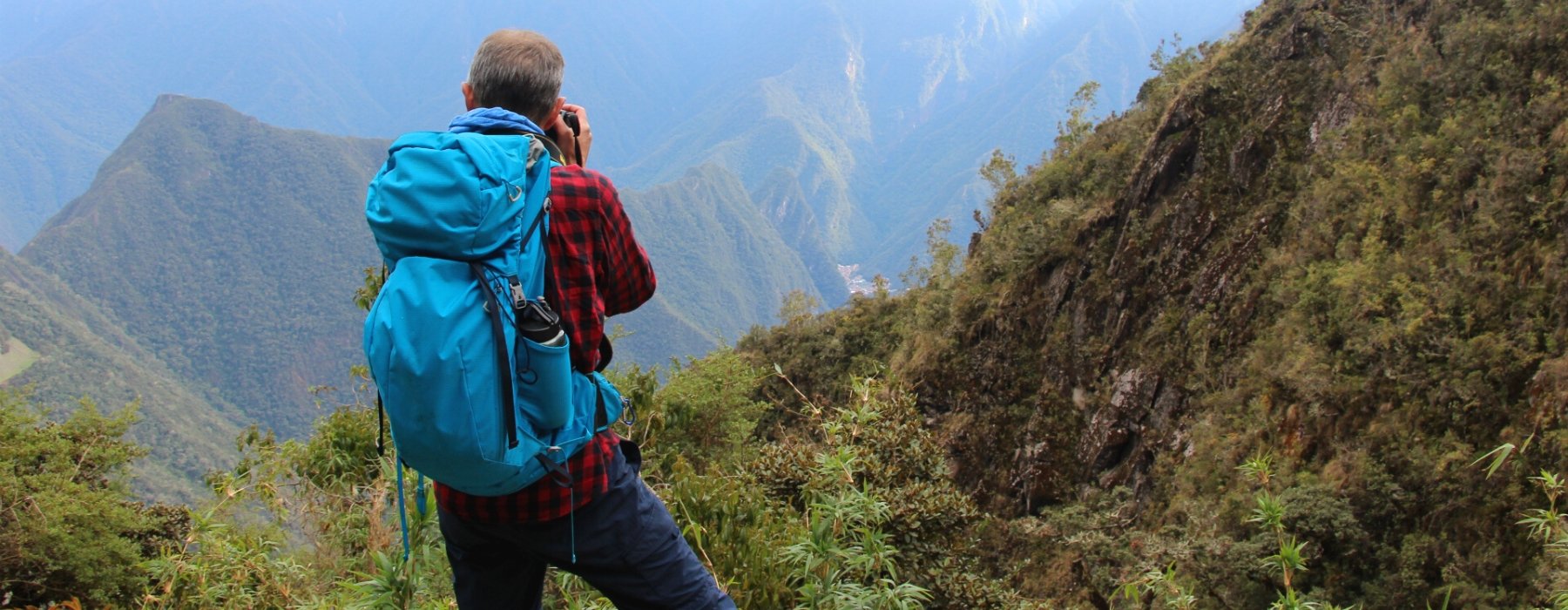
Every Andean Great Treks holiday has been thoughtfully planned and crafted by our specialists. They draw on their own extensive travel experience and the guidance and expertise of our local partners to create superb holidays. Our specialists are committed to making every aspect smooth and enjoyable; they genuinely want to ensure that the holidays they create leave you with wonderful lasting memories.
Every Andean Great Treks traveller is accompanied by an experienced tour guide, you will be immersed in Historic cities, ancient ruins and unfamiliar landscapes are all brought to life by our carefully selected local guides. They want to share their expertise and help you make your own discoveries too; their sole mission is to ensure you enjoy every moment.
Giving you the freedom to make your holiday even more memorable. We know how much our customers look forward to their holiday and we pride ourselves on the choice and flexibility that we offer to enhance every aspect of your experience. Whether it’s getting to the airport, upgrading your room or booking an additional excursion, we can help.

Our guides are the stars of the show; it is their unrivalled knowledge, passion and expertise that will transform your tour experience from good to truly extraordinary!
Because the have grown up in the area and know it like the back of their hand, so they can help you experience whichever aspects most interest you. They’re passionate about sharing their corner of the world with you, and as you explore together, they’ll open your eyes to the intricate details, provide background to enhance your understanding of what you’re seeing, and share stories that will bring everything to life.
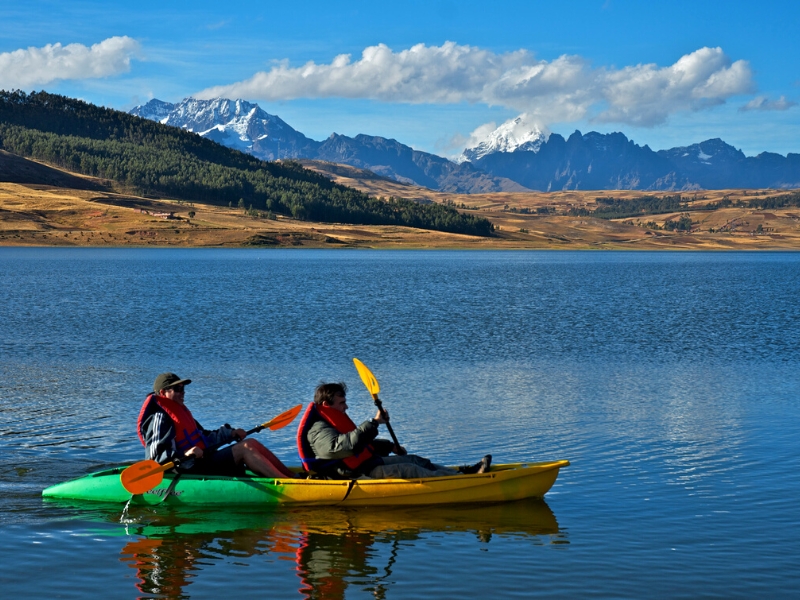
“Your inspiration for a trip can be a single word or a highly evolved outline, but it’s the conversations we have that help us understand the experience you’re looking for. Meanwhile, I’m looking back on the time I spent at the destination.
‘The great thing about working with a specialist at Andean Great Treks is how they take your complete jumble of ideas and turn them into something absolutely spectacular.’
As you begin to share your ideas with your specialist, it will connect them immediately back to a time in their own travels. Conjuring a picture of the rest time they made that same discovery, reminding them how it felt.
Your specialist understands that, when the journey is right, it has the power to excite your emotions in the most profound ways after all, that was the effect on them.
They carry a treasure box of moments, captured over many journeys, into every suggestion they’ll share with you, as they ask you how you want to feel on your trip.

EXPERIENCES THAT CALL TO YOU
It’s what you do in a destination that helps bring it to life. It’s why we strive to choose experiences that help you connect to a place, absorbing a little of its complex character. Wherever your passions lie, we’ll recommend experiences that speak to you, and we’ll recommend the guide or local expert who’s most qualified to help you explore. Packing your holiday full of special experiences means some early starts and long days, but you can be sure that you’ll return home with many incredible memories! Read our Tours and check the Physical Ratings to see if the pace and activity levels are right for you.

STAYS WITH DIFFERENCE
We know that where you stay is a cherished part of your travels. So, we go to great lengths to find places to stay that exceed expectations, or go above and beyond the ordinary, whether in their character, hospitality, or location. Over the years, we’ve discovered the very best properties, trying and testing them, so we can choose the right one for you. We’ve nourished long-standing relationships with these establishments and the people who founded them, and we’ve stayed there many times often, we’ll even know which rooms have the best views (and reserve them for you).
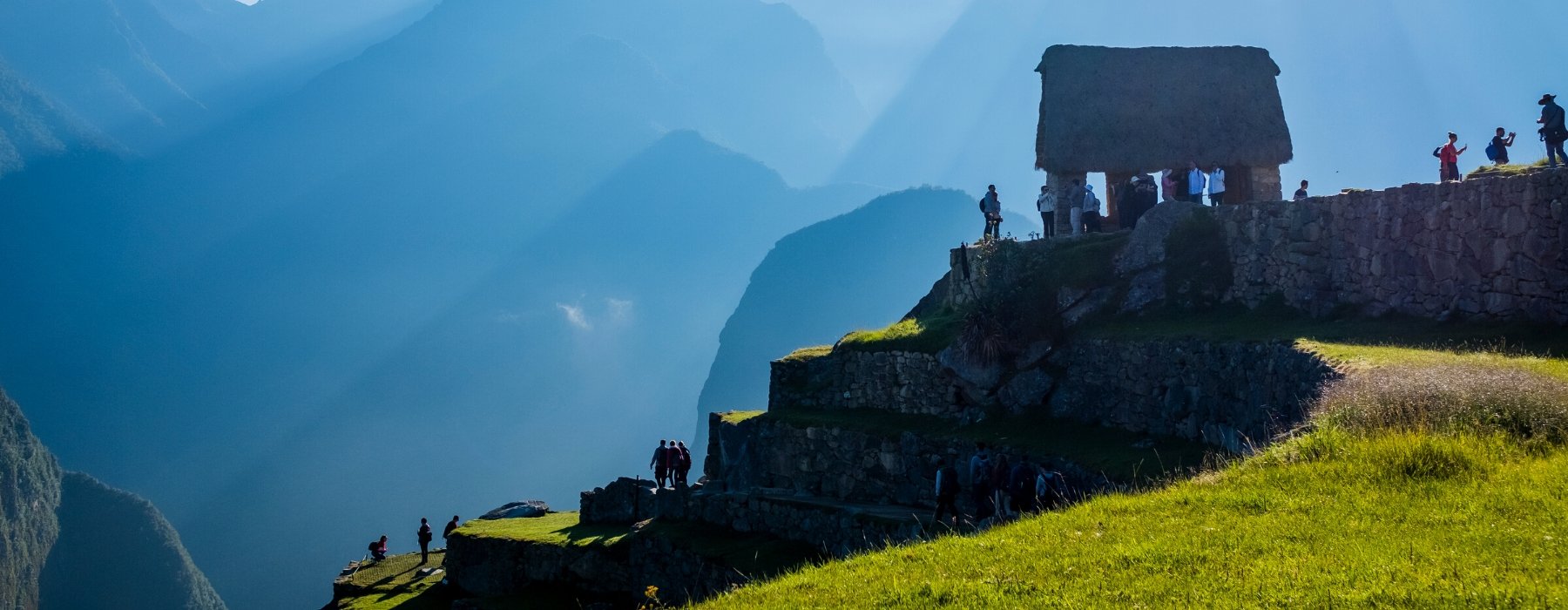
Our style of travel — authentic, thoughtful, and focused on building meaningful connections to the people and places you visit — is inherently respectful and considerate of the destinations we love. We design each aspect of your trip exactly as you want it, which includes its sustainability. That might mean choosing a train journey instead of a flight, staying at eco-friendly wildlife lodges, or opting for experiences that give back to the communities you’re visiting. The choice is yours.
Responsible travel has always been at the heart of what we do. First and foremost, because it gives you the best experience, but, also because it helps to preserve the communities and landscapes you visit. This isn’t new for us we collaborated with local communities and outside experts so we can grow to be better ambassadors.
The most authentic and interesting experiences often directly benefit the local people. We prefer to buy local products that are produced in the organic farms of the Sacred Valley, we also have alliances with local artisan organizations who provide us with souvenir items for our clients, your money directly benefits the local economy.
Our style of travel — authentic, thoughtful, and focused on building meaningful connections to the people and places you visit — is inherently respectful and considerate of the destinations we love. We design each aspect of your trip exactly as you want it, which includes its sustainability. That might mean choosing a train journey instead of a flight, staying at eco-friendly wildlife lodges, or opting for experiences that give back to the communities you’re visiting. The choice is yours.
Responsible travel has always been at the heart of what we do. First and foremost, because it gives you the best experience, but, also because it helps to preserve the communities and landscapes you visit. This isn’t new for us we collaborated with local communities and outside experts so we can grow to be better ambassadors.
The most authentic and interesting experiences often directly benefit the local people. We prefer to buy local products that are produced in the organic farms of the Sacred Valley, we also have alliances with local artisan organizations who provide us with souvenir items for our clients, your money directly benefits the local economy.

‘There’s a saying: we don’t inherit the Earth from our ancestors, we borrow it from our children. When we show you our country, this philosophy guides everything we do. It’s our responsibility to preserve the environment and wildlife, and support communities. That means using slower modes of transport, like cycling, employing local people, and working with communities who’ll benefit directly from your visit. This also gives you the best, most authentic impression of the places we want to share with you.
We prefer to buy local products in ecological bags, to avoid the use of plastic bags, likewise we teach the use of soaps and ecological products in each tour that we organize. We also work on reforestation projects with local communities who take care of landscape resources such as communal reserves, national parks.
‘There’s a saying: we don’t inherit the Earth from our ancestors, we borrow it from our children. When we show you our country, this philosophy guides everything we do. It’s our responsibility to preserve the environment and wildlife, and support communities. That means using slower modes of transport, like cycling, employing local people, and working with communities who’ll benefit directly from your visit. This also gives you the best, most authentic impression of the places we want to share with you.
We prefer to buy local products in ecological bags, to avoid the use of plastic bags, likewise we teach the use of soaps and ecological products in each tour that we organize. We also work on reforestation projects with local communities who take care of landscape resources such as communal reserves, national parks.

The Colca Canyon is located about 4 hours outside of the city of Arequipa. The best way to get there is to take a tour to and from Arequipa. The Colca Canyon is deeper than the Grand Canyon, the area surrounding the Canyon is famed for its traditional and colorful towns which you will pass through along the way.

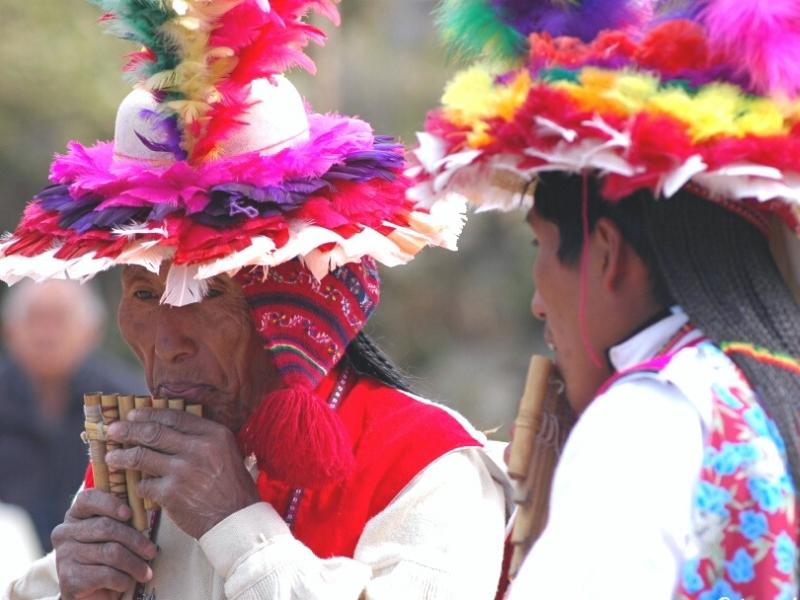
Sublime landscapes, wildlife, history, culture - Peru has more than its fair share. Its famed snow-capped Andean peaks shelter the temples and fortresses of the Inca and other pre-Columbian cultures, linked by a network of paved trails.


Visit the Colca Canyon, this natural attraction is located in the Arequipa region, when trekking through the Colca Canyon gorges, you can enjoy the beautiful Andean landscapes, picturesque towns and the impressive flight of the condors that was a sacred bird for the Incas.
